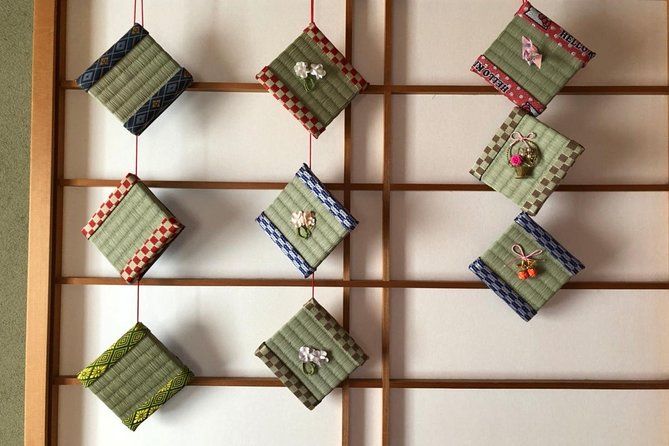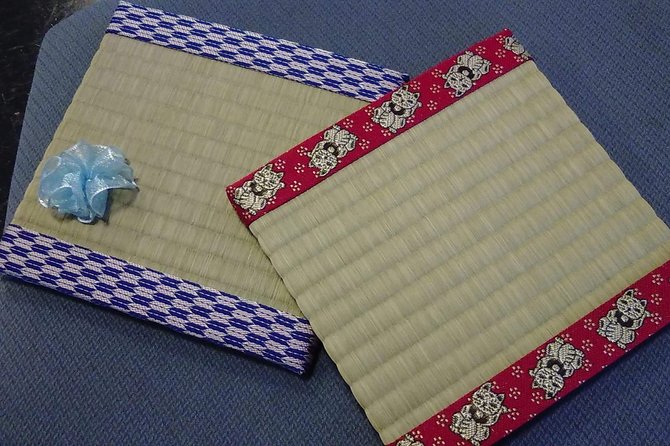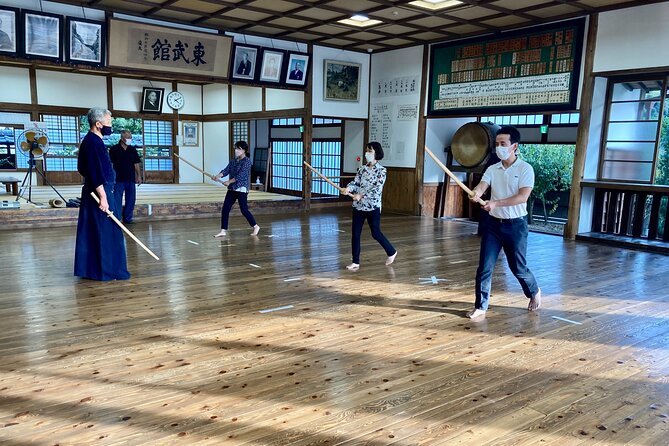Step into the world of Japanese culture as you learn about the enchanting beauty of ‘tatami’. Picture yourself walking on these traditional woven straw mats, feeling their soft texture beneath your feet and inhaling the subtle, comforting aroma.
But there’s more to ‘tatami’ than meets the eye. In this article, you will discover the intriguing history and significance of this unique Japanese flooring, uncover the meticulous process of its creation, and even have the chance to create your own ‘tatami’ under the guidance of skilled artisans.
Get ready to embark on a journey that will unveil the secrets of ‘tatami’ and leave you with a newfound appreciation for Japanese craftsmanship.
Quick Takeaways

- Tatami is a traditional flooring material made from woven straw, and it holds great significance in Japanese culture.
- The manufacturing process of tatami showcases meticulous craftsmanship and attention to detail, using traditional materials like rice straw and rush grass.
- Tatami mats are used in traditional Japanese homes to cover the floor, determine room layout, and create seating areas for guests.
- Tatami offers benefits in modern living, including natural insulation properties, comfort for joints and posture, antibacterial properties, and a calming effect on the mind.
History and Origins
The history and origins of Japanese culture can be traced back centuries, showcasing a rich heritage that has greatly influenced the country’s traditions, customs, and way of life.
One aspect of Japanese culture that holds great significance is the art of tatami. Tatami is a traditional flooring material made from woven straw and is known for its unique characteristics and cultural symbolism.
The production techniques for tatami have been passed down through generations, ensuring the preservation of this traditional craft. Today, tatami continues to play a vital role in Japanese architecture, with its use not only limited to traditional spaces but also incorporated in contemporary designs.
Its natural materials and ability to create a serene atmosphere make tatami a popular choice for architects and designers seeking to blend tradition with modernity.
Manufacturing Process
With a rich heritage that has influenced Japanese traditions for centuries, the manufacturing process of tatami showcases the meticulous craftsmanship and attention to detail that goes into creating this iconic flooring material. The process begins with the selection of traditional materials such as rice straw and rush grass, which are carefully harvested and dried to ensure their quality. These materials are then woven together to form the core of the tatami mat. Next, the core is covered with a layer of woven igusa, a type of rush grass, which adds both durability and a pleasant aroma to the mat. Finally, the tatami craftsmen carefully measure and cut the mat to the desired size, ensuring a perfect fit for the room. This intricate process highlights the dedication and skill required to create each and every tatami mat, making it a truly unique piece of Japanese craftsmanship.
| Manufacturing Process | |
|---|---|
| Selection of traditional materials | Harvesting and drying of rice straw and rush grass |
| Weaving the core of the tatami mat | Using rice straw and rush grass |
| Covering the core with woven igusa | Adding durability and aroma |
| Measuring and cutting the mat | Ensuring a perfect fit for the room |
Types of Tatami

There are various types of tatami available, each with its own unique characteristics and purposes. Here are four types of tatami design that you should know:
- Igusa Tatami: This is the most common type of tatami, made from rush grass. It’s known for its natural scent and ability to absorb humidity.
- Suge Tatami: Suge tatami is made from woven rush grass and has a distinct pattern of diagonal lines. It’s known for its durability and resistance to mold.
- Edamatsu Tatami: This type of tatami features a design that resembles pine needles. It’s often used in tea rooms and has a more luxurious appearance.
- Yawaragi Tatami: Yawaragi tatami is made from softer materials, such as foam or cork, and is designed to provide a more comfortable and cushioned surface.
When it comes to tatami maintenance, regular cleaning and airing is necessary to prevent mold and maintain its freshness. Vacuuming and wiping with a damp cloth are recommended methods for cleaning tatami mats.
Significance in Japanese Culture
Tatami holds great significance in Japanese culture, playing a central role in traditional living spaces and cultural practices. It isn’t just a type of flooring, but also a symbol of Japanese identity and values.
Tatami mats are made from natural materials like rice straw, which symbolizes simplicity and harmony with nature. They’re often used in Japanese ceremonies, such as tea ceremonies and weddings, where they create a sense of elegance and tradition.
Tatami also serves practical purposes, such as providing a comfortable and clean place to sit or sleep. In addition, the size and arrangement of tatami mats are deeply rooted in Japanese architecture and design principles.
Tatami in Traditional Japanese Homes
Japanese homes have long embraced the cultural significance of tatami, incorporating it into their traditional living spaces in unique and meaningful ways. Tatami isn’t just a flooring option; it holds a deep connection to Japanese culture and heritage.
Here are four ways tatami is used in traditional Japanese homes:
- Flooring: Tatami mats cover the floor, creating a soft and comfortable surface for sitting, sleeping, and walking.
- Room layout: Tatami mats determine the size and layout of rooms in traditional Japanese homes. The number of mats used signifies the size and importance of the room.
- Seating arrangement: Tatami mats are used to create seating areas called ‘zashiki.’ These areas are typically reserved for guests and are an integral part of Japanese hospitality.
- Integration with nature: Tatami mats are often placed near windows or sliding doors to create a seamless connection between the indoor and outdoor spaces.
In contemporary interior design, tatami continues to be valued for its natural aesthetic and cultural significance. It adds a touch of tradition and tranquility to modern homes while promoting a sense of harmony with nature.
Benefits of Tatami in Modern Living
In modern living, incorporating tatami into home design offers numerous benefits that enhance comfort and promote a sense of tranquility.
One of the advantages of tatami is its natural insulation properties, which help regulate room temperature and reduce energy consumption.
Tatami also provides a soft and cushioned surface to walk on, relieving pressure on the joints and promoting better posture.
Plus, tatami is known for its health benefits. The woven straw material used in tatami is believed to have antibacterial properties, reducing the risk of allergies and respiratory issues.
The natural scent of tatami has a calming effect on the mind, promoting relaxation and better sleep quality.
Experiencing Tatami: Factory Tour and Hands-On Workshop
Visitors can embark on a captivating journey through the world of tatami by participating in a factory tour and hands-on workshop. This unique experience allows individuals to not only learn about the craftsmanship behind tatami but also to engage in the process themselves.
The factory tour provides an up-close look at the production of tatami, giving participants a deeper understanding of its creation. Plus, the hands-on workshop allows individuals to try their hand at making their own tatami. This immersive experience offers several benefits, including:
- Insight into the traditional artistry: Participants gain a firsthand understanding of the intricate techniques and attention to detail required in tatami production.
- Appreciation for the cultural significance: Engaging in the workshop allows individuals to appreciate the cultural significance of tatami and its importance in Japanese homes and traditions.
- Personalized creations: By participating in the workshop, individuals have the opportunity to create their own unique tatami piece, adding a personal touch to their experience.
- Memorable souvenirs: The workshop allows participants to take home their handmade tatami as a special memento of their visit.
Common questions
How Long Does the Factory Tour and Hands-On Workshop Last?
The factory tour and hands-on workshop typically last around 2 hours. During the tour, participants can learn about the benefits of experiencing handmade tatami and receive tips for making their own tatami at home.
Is Transportation Provided to and From the Factory?
Transportation arrangements are not provided to and from the factory. Visitors are responsible for their own transportation. The duration and schedule of the factory tour and hands-on workshop can be obtained from the tour operator.
Are There Any Age Restrictions for Participating in the Hands-On Workshop?
There are no age restrictions for participating in the hands-on workshop. However, it is recommended that participants be of a certain age to fully enjoy and engage in the experience.
Are There Any Restrictions on the Number of Participants in the Factory Tour?
There are no restrictions on the number of participants in the factory tour. However, there may be age restrictions for the hands-on workshop. It is advised to check the website or contact customer support for further information.
Is There a Dress Code for the Factory Tour and Hands-On Workshop?
There is no specific dress code for the factory tour and hands-on workshop. Participants are encouraged to wear comfortable clothing. The duration of the hands-on workshop may vary depending on the activities involved.
The Sum Up
To sum it up, the ‘Tatami’ Factory Tour and Handmade Tatami Experience offers a unique opportunity to explore the rich history and significance of tatami in Japanese culture.
Participants will witness the intricate craftsmanship involved in the production of these traditional mats and even have the chance to create their own under the guidance of skilled artisans.
Whether you’re a fan of Japanese culture or simply curious to learn more, this experience promises an unforgettable journey into the heart of Japanese tradition.





